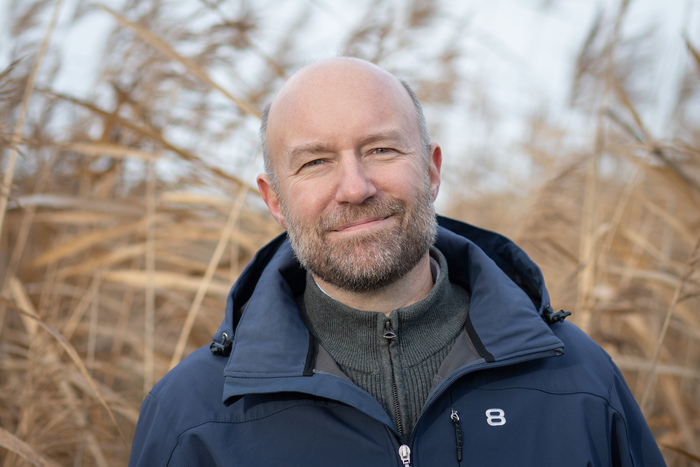Natural greenhouse gas emissions from streams and lakes are strongly linked to water discharge and temperature according to a new study led by Linköping University, Sweden. This knowledge is nessessary to assess how man-made climate change is altering greenhouse emissions from natural landscapes and has large implications for climate change mitigation measures.

Credit: Charlotte Perhammar
Natural greenhouse gas emissions from streams and lakes are strongly linked to water discharge and temperature according to a new study led by Linköping University, Sweden. This knowledge is nessessary to assess how man-made climate change is altering greenhouse emissions from natural landscapes and has large implications for climate change mitigation measures.
“The use of agriculture and forestry as carbon sinks is debated at the moment and the question is how effective such carbon sinks are for mitigating climate change. Our new study shows that with increased precipitation, a larger amount of carbon may be washed into streams and lakes and an increased share of this carbon also end up in the atmosphere. Hence, landscape carbon sinks may become less effective in the future,” says David Bastviken, professor at the Department of Thematic Studies Environmental Change at Linköping University.
There are large natural carbon sinks because photosynthesis transfer atmospheric carbon first to biomass of plants and algae, and then to soils and sediments where the remains of the biomass are stored. Then there are also large natural climate emissions from the respiration of biomass across the whole landscape.
Previously, the natural carbon fluxes were in balance – similar amounts of greenhouse gases were taken up by nature as were released.
However, human use of fossil fuels have added a carbon flux to the atmosphere driving climate change. A great concern now is how the changed climate affects the balance of the natural greenhouse gas fluxes. If natural emissions increase faster than natural sinks, we get a vicious circle, i.e. a self-reinforcing effect by which increased emissions affect the climate resulting in greater emissions. This would accelerate climate change even further.
“The natural greenhouse gas fluxes are in the process of becoming partly anthropogenic because they are being impacted by anthropogenic climate change. The UN climate panel IPCC could not yet fully consider this, because there is too little information about climate feedbacks, which are taking place gradually and varies between environments, making them difficult to measure,” says David Bastviken.
Important, but poorly mapped, contributions to the natural greenhouse gas fluxes come from streams and lakes. They receive large quantities of carbon from the soil in their upstream catchment areas and release a large quantity of greenhouse gases into the atmosphere in relation to their surface area. Previous measurements of greenhouse gas emissions from streams and lakes have often been made using measurement from few locations or few occasions in each stream or lake being studied.
“It is clear that such measurements are not sufficiently representative and does not fully tell how large the fluxes are, nor how they are regulated”, says David Bastviken.
Consequently, his research group, together with researchers from Tamil Nadu Agricultural University in India, the Swedish University of Agricultural Sciences, Stockholm University and the University of Gothenburg, have now applied a new approach by which a large number of measurement points were used over a long period in both sterams and lakes across an entire catchment area. New types of low-cost sensors have made an important contribution, and that approach provides large amounts of information about how greenhouse gas fluxes vary in both time and space simultaneously.
In the study, published in the scientific journal Limnology and Oceanography Letters, the researchers quantified the amounts of carbon transported from the soil in a catchment area to streams and lakes, and to the atmosphere. The amount varies depending on the type of soil, topography, temperature and stream discharge.
The researchers were able to demonstrate that greenhouse gas emissions from streams over time were dependent of water runoff being linked to the amount of precipitation Emissions from lakes were primarily dependent on temperature. At higher temperatures, they release more methane, especially from near-shore areas being less than one meter deep.
“The study is a big step forward towards increased understanding of the greenhouse gas fluxes in stream networks, providing potential to predict future fluxes. The integration across a full catchment with large amounts of data shows that the relationships between fluxes and environmental factors influenced by the climate may be simpler than we think. This gives us hope that we will be able to predict emissions from larger areas helping us quantify climate feedbacks and include such information when planning climate change mitigation efforts,” says David Bastviken.
The measurements were conducted over three years in a catchment area in southwest Sweden. The area contained a large number of different types of nature such as wetlands, forest, streams, lakes and fields, peat soils and mineral soils, and harbour normal forestry and agriculture. This was beneficial to gain results being as representative a as possible for the Swedish landscape types. David Bastviken says that similar measurements made in other places around the world, will be very valuable for comparison and development of global knowledge.
This study was made possible by funding from the Swedish Research Council FORMAS, the Swedish Research Council, the European Research Council and the Swedish Nuclear Fuel and Waste Management Company.
Journal
Limnology and Oceanography Letters
DOI
10.1002/lol2.10312
Article Title
Aquatic carbon fluxes in a hemiboreal catchment are predictable from landscape morphology, temperature, and runoff
Article Publication Date
6-Feb-2023




